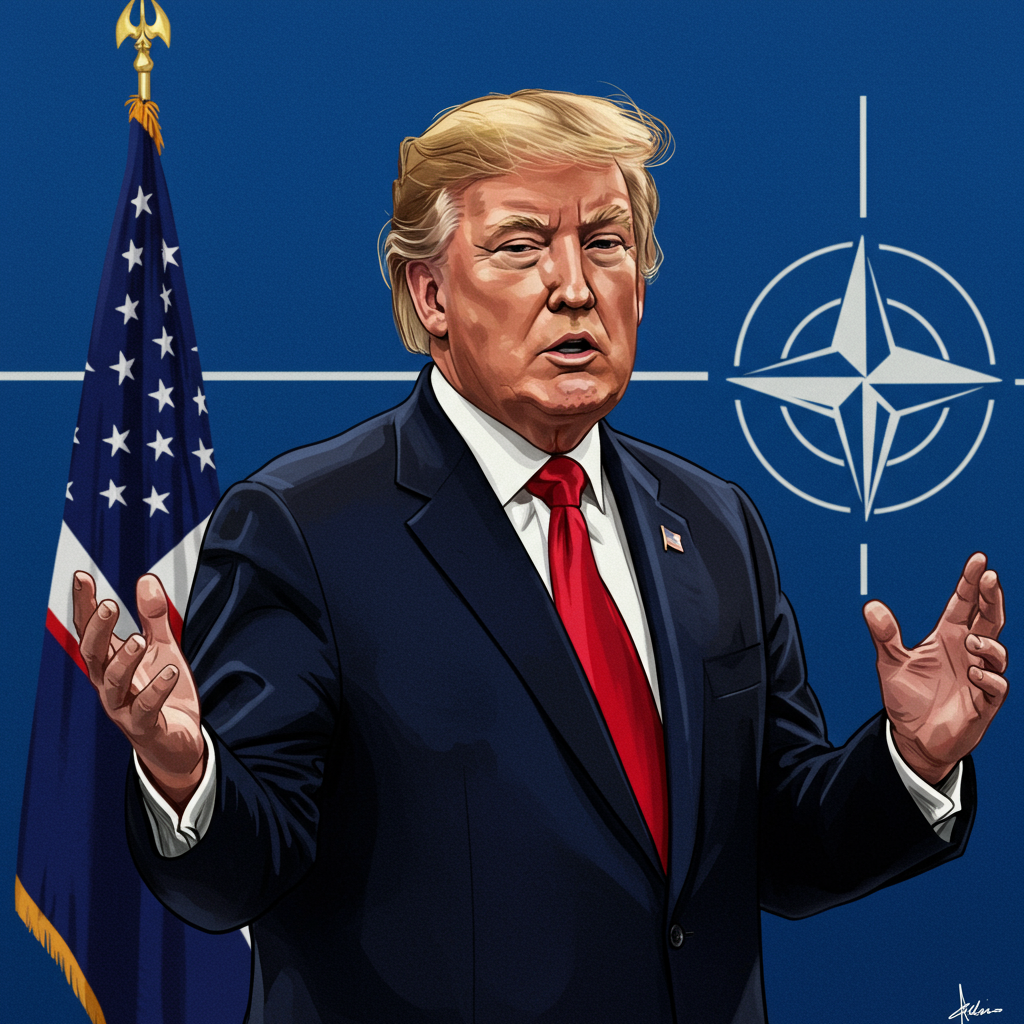NATO Leaders Gather in The Hague Amid Push for Historic Defence Spending Hike
Leaders from all 32 NATO member states have convened in The Hague for a pivotal summit, described by German Chancellor Friedrich Merz as “historic.” The gathering aims to reinforce European security for future generations and address the pressing challenges posed by the current geopolitical landscape, notably Russia’s ongoing aggression in Ukraine.
The summit marks US President Donald Trump’s first attendance since 2019, a return anticipated with strategic calculation by allies. A central focus is the expected commitment from all members to a significantly raised defence spending benchmark: 5% of national output (GDP) on defence and related infrastructure. This target more than doubles the alliance’s long-standing guideline of 2% set in 2014 and surpasses a more recent, less ambitious 3.5% target some allies were previously aiming for by 2035.
Rutte’s Careful Diplomacy Navigating Trump’s Return
Navigating relationships with President Trump, known for his sometimes unpredictable approach to diplomacy, has been a persistent challenge for Western leaders. Ahead of the summit, NATO Secretary General Mark Rutte engaged in what analysts describe as careful, even “masterful,” diplomacy aimed at managing Trump’s engagement and ensuring a successful summit.
This strategy included a pre-summit message from Rutte to Trump, later shared by the US President on social media. The message included effusive praise for Trump’s handling of the Western alliance and recent actions concerning Iran, which Rutte called “truly extraordinary, and something no one else dared to do,” asserting it made allies “safer.” Rutte also lauded Trump for securing the anticipated 5% spending commitment, framing it as a “big success” and something “no American president in decades could get done,” adding that Europe would “pay in a BIG way… and it will be your win.”
Rutte later told the BBC he had “absolutely no problem” with the private message being made public, stating “there was nothing in it that had to stay secret.” The approach of extensive praise and flattery is seen by officials and analysts as a deliberate tactic to appeal to Trump’s transactional nature and desire to be perceived as a “winner,” aiming to ensure an “accident-free summit” and keep the US president supportive of the alliance agenda, despite past criticisms of NATO as “obsolete.”
Pressure on Spending Targets and Article 5 Uncertainty
The proposed 5% target is broken down into two parts: 3.5% for core defence requirements and an additional 1.5% for broader “defence-related expenditure,” encompassing areas like cybersecurity and infrastructure. Achieving the 3.5% core spending target alone will require a significant adjustment for the majority of NATO countries. Currently, 27 out of 32 allies spend under 3% of GDP on defence, with eight remaining below the original 2% threshold.
While Secretary General Rutte insisted before the summit that the US president and senior leadership have a “total commitment” to NATO, accompanied by an expectation of matching American military spending, uncertainty persists. Trump himself gave a “watery response” regarding his commitment to NATO’s core collective defence principle, Article 5, before arriving, stating it “Depends on your definition” and that there were “numerous definitions of article 5.”
Divisions Emerge Over Hitting the Ambitious Goal
Despite the alliance’s push for unity on the new target, challenges and differing positions among members are evident:
Germany: Chancellor Merz has highlighted the commitment, with Germany backing a budget deal to reach the 3.5% core target by 2029. He clarified this investment, which includes substantial increases in defence spending peaking at €152.8bn in 2029, is driven by Germany’s own security interests due to Russia’s aggression, not as a favour to the US.
United Kingdom: Prime Minister Sir Keir Starmer has pledged the UK will meet the full 5% target by 2035, acknowledging the need for agility in an era of “radical uncertainty.” The government anticipates spending 2.6% of GDP on core defence within two years, alongside 1.5% on related areas.
Spain: Spain currently has the lowest defence spending among allies, below 1.3% of GDP. Prime Minister Pedro Sánchez has voiced resistance to a dramatic increase, deeming it “unreasonable,” “counterproductive,” and unpopular domestically. Sánchez suggested Spain could be exempted from the target, a notion swiftly rejected by Rutte, who stated NATO is “absolutely convinced Spain will have to spend 3.5% to get there.” This friction point was even highlighted by President Trump on social media, posting a graphic titled “Spain threatens to derail summit.”
Belgium and Slovakia: Following Spain’s stance, these countries also expressed interest in obtaining “flexibility mechanisms” regarding the target, potentially denting the image of alliance unity. Belgium’s spending is 1.3%, while Slovakia stated it reserves the right to decide its timeline.
Despite these stated hesitations, all 32 member states are ultimately expected to sign on to the new 5% defence pledge at the conclusion of the summit.
Context of the Ukraine War
The urgency behind increasing defence spending is underscored by the ongoing conflict in Ukraine. Recent Russian attacks on Tuesday resulted in 20 deaths, including in missile strikes on Dnipro and Samar that killed 17 people and wounded 160, damaging civilian infrastructure including a kindergarten and a train.
Ukrainian President Volodymyr Zelensky has arrived in The Hague and is scheduled to meet President Trump on the sidelines. Their relationship has seen difficult moments in the past, though a more constructive exchange occurred recently. Rutte also publicly praised Trump for his role in opening a potential channel with President Putin regarding a ceasefire. Allies have already committed substantial military support to Ukraine, with Europe and Canada providing over $35 billion (£26bn) this year alone.
The summit agenda has reportedly been scaled back, including a shortened main working session, apparently to accommodate President Trump’s schedule. Leaders gathered for a group photograph before attending a dinner hosted by King Willem-Alexander and Queen Maxima of the Netherlands.
Adding to the complex environment surrounding the summit, train travel from Schiphol Airport near Amsterdam was severely disrupted due to damaged cables, with security officials stating that sabotage could not be ruled out.
The Hague summit represents a critical moment for NATO, aiming to solidify an ambitious new defence spending commitment and project unity, while navigating the complex dynamics introduced by the return of President Trump and internal disagreements on how to meet the demanding new targets.



